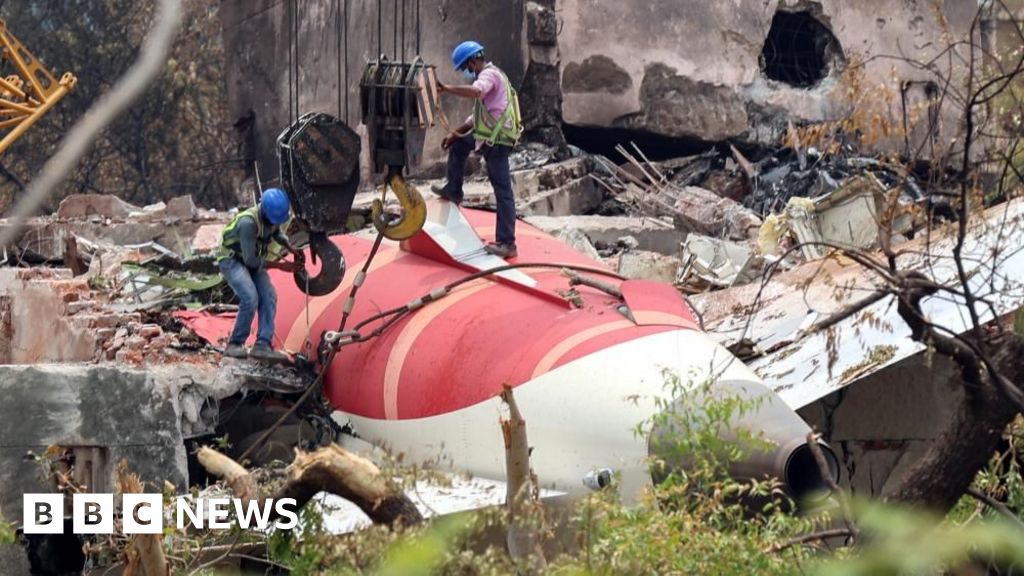- The tokenized RWA market is projected to be worth at least $2 trillion by the end of the decade.
- Kadena’s newly launched $50 million grant targets RWA projects, dApps, DeFi, AI, and Web3 gaming.
- Tokenized RWA adoption remains held back by unclear regulations
Blockchain has transformed how the world looks at money, and in the near future, it’ll be changing how we look at traditional assets like property and bonds as real-world asset (RWA) tokenization is taking off in 2025.
CCN spoke with Annelise Osborne, CBO of Kadena, one of the industry’s longest-running finance-centric blockchain networks, to find out why RWA tokenization is set to become a multi-trillion-dollar market.
Upgrading Capital
RWA tokens represent a convergence of traditional and decentralized finance (DeFi), and have the power to transform tangible assets, such as fiat currency, property, and stocks, into digital tokens on the blockchain.
RWA tokenization is projected to become crypto’s next trillion-dollar market and play a major role in the future global economy. Some analysts estimate the tokenized RWA market to reach somewhere between $2 and $30 trillion by the end of the decade.
As Osborne sees it, tokenization was almost inevitable.
“I look at tokenization more as an upgrade to capital markets and the financial system. Technology has touched our lives in so many ways. We walk around with a super computer in our pocket and the floor of the once bustling NYSE is now like a library. That assets are using technology to become faster, cheaper and more secure is a no brainer. “
Stablecoins, i.e., tokenized currency such as Tether’s USDT, were some of the earliest innovations in tokenized RWAs. Backed by U.S. Treasury Securities and other assets, stablecoins have proven to be an incredibly effective tool in the world of payments. Osborne adds:
“In 2024, approximately $40 trillion dollars of non-wholesale cross-border payments. Assuming a remittance cost of 6-7% for these payments, $2.4 trillion could be saved using stablecoins in one year. Tokenized money also offers immediate settlement, putting funds to use right away instead of waiting days to redeploy.”
Tokenization speeds up the settlement process as it flows through a cost-effective, automated, and transparent system. Firms will benefit from automated compliance checks built into smart contracts, contracts, reducing the need for intermediaries, paperwork, and human error.
She highlights that tokenized investment funds, such as those from Fidelity, WisdomTree, have been shown to save around 25% in operating costs. This trickles down with the added benefit of being able to open up to a broader base of investors, thanks to lowered minimum requirements.
“I don’t believe tokenization is hype. I believe it is the next tech upgrade for finance offering opportunities to both decrease costs and increase revenues.
Blockchain’s days as a fringe technology are long behind it. The U.S., U.K., and other powerhouses of the financial world are looking to Web3 firms to support their RWA tokenization programs.
For Osborne, the timing reflects that the tech has reached a point of maturity, as evidenced by global regulatory momentum.
A Big Opportunity
Pointing to the speed and cost savings involved with RWAs, Osborne highlights the prowess of stablecoins in cross-border transfers, which, with fiat alon,e is a market projected to reach $1.3 trillion by 2032.
“Money can then be used the same day as opposed to waiting for the transfer. Stablecoins offer no currency friction or middleman fees. More money goes to your friends or family’s pockets.”
In private markets and investments, she believes that RWAs will unlock opportunities that were previously reserved for ultra-high net worth individuals and entities.
“Tokenizing funds or investments has opened up access to invest in real estate, art, songs, private credit, and venture capital. The lower cost lift of the fund allows lower minimum investments. This area will continue to grow.”
But it won’t be that simple.
If RWAs truly take off and become a multi-trillion-dollar market, the market will ultimately exist within a centralized/decentralized market structure.
This could lead to a disconnect between retail and institutional investors due to higher accreditation requirements or minimum investment thresholds.
As money, investment, and securities are all regulated with know-your-customer (KYC) requirements and anti-money laundering (AML) checks in place, Osborne notes there is a centralized nature to securities that may limit certain activities.
“I don’t believe that this limits retail and institutional investors. I do think that the securities regulation limits DeFi participation for those not identified.”
However, Osborne highlights a need for greater institutional adoption. But, this can’t happen without clear regulations, as these wealthy entities can’t operate in the grey.
“There needs to be black and white rules which will facilite building. I think the US is much more open to innovation and regulatory clarity this year.”
Then, the general population, as well as average investors, regulators, legislators, business leaders, and others, need to be made aware of the benefits that blockchain can bring.
Finally, Osborne posits that interoperability is key. Without a seamless connection between all the key pieces of infrastructure needed to see RWAs flourish, the market risks being siloed off as crypto was before bridges and wrapped tokens.
Building Blocks
In May, Kadena launched a $50 million grant targeting innovation in RWA tokenization, artificial intelligence, dApps, and GameFi. Osborne explains:
“The decision was driven by clear market momentum. We’re seeing unprecedented institutional adoption with BlackRock’s BUIDL fund, JPMorgan’s Onyx processing hundreds of billions in transactions, and regulatory frameworks creating clear pathways for compliant tokenization.”
Half of the grant will be aimed directly at RWAs. Firstly, as part of Kadena’s commitment to tokenization assets on-chain. And secondly, to see the development and launch of multiple, compliant, institutional-grade RWA projects within a year.
“Compliance means meeting the complex regulatory requirements of the jurisdictions where these assets operate. Our RWA token standard draws on the widely recognized ERC-3643 (T-REX) protocol and integrates ONCHAINID, enabling compliance features directly within token contracts.”
She adds,
“This includes KYC/AML verification, investor accreditation checks, jurisdiction-specific restrictions, and automated reporting capabilities. We encourage any entity evaluating our RWA solutions to conduct thorough due diligence to ensure compliance with their specific jurisdictional requirements.”
She notes that Kadena is “particularly interested” in projects that can demonstrate institutional and retail demand. This can be in areas such as payments, tokenized, commercial real estate, and private credit instruments.
“We’re seeing strong interest from SEC-registered investment advisors looking to integrate digital asset infrastructure for real-world impact assets.”
Applicants are evaluated on several criteria, including quality and provenance of the underlying assets, the team’s experience and credibility, the project’s custody and authentication mechanisms, as well as realistic market demand.
“Projects need to demonstrate they’re not just tokenizing for tokenization’s sake, but solving real liquidity or accessibility problems in these markets.”
Funding Web3
The other $25 million of Kadena’s grant is aimed at decentralized apps (dApps), decentralized exchanges (DEXs), and Web3 gaming. According to Osborne, Kadena is eyeing projects that add to its ecosystem and provide community benefits.
“We welcome innovative and creative solutions. We want cutting edge developers building the new products and leveraging the crypto ecosystem. I’m a huge believer that TradFi and DeFi will merge and I think Kadena has the right tools and pedigree to make that happen. We are both the Hoodies and the Suits.”
Interestingly, she posits that GameFi has grown beyond the “speculative mechanics” found in early play-to-earn (P2E) title, and is evolving into an ecosystem of sustainable gaming economies.
“The focus is shifting to actual gameplay value and long-term user engagement rather than short-term token incentives. We are focused on bringing in new gamefi projects and hope to have some to announce soon.”
The grant will accelerate ecosystem development where institutional demand is highest, as well as technical innovation. Throwing their weight behind RWA and DeFi projects, Kadena hopes to showcase its scalability and security prowess.
“It’s an investment in proving that our technology can handle real-world, high-value applications at scale—something that will be crucial as the industry matures beyond speculative applications.”
Kadena is a finance-focused network, though evidently this won’t limit the success of grant applicants. As Osborne notes, this focus is an advantage from a compliance, security, and scalability perspective.
Osborne states that Kadena understands the requirements of real-world applications’ needs, and its technology, which is general purpose, can support any app that needs scale and security.
Kadena’s Ambition
Founded in 2016, Kadena officially launched in 2020. Considering that a vast majority of blockchain projects fail, Kadena is one of the industry’s veterans as it has weathered several market crashes.
“Our focus on building fundamental infrastructure rather than chasing market trends has been key to our resilience. While others pivoted with each cycle, we’ve consistently developed our core technology—Chainweb and Pact—knowing that scalable, secure infrastructure would eventually be essential.”
Osborne notes that volatility validated their approach. High-stress periods put networks with weak fundamentals under pressure. Robust infrastructure, however, became more valuable.
With the grant, Kadena aims to build bridges between TradFi and DeFi with institutional-grade RWA projects, DEXs’, analytics tools, developer resources, and more.
Looking ahead, Kadena is focused on achieving a mid-2025 Chainweb EVM testnet launch, as well as having their first ecosystem bridge go live in the near future.
Osborne reveals that Kadena is also working to deepen regulatory partnerships and expand its RWA framework with the aim of positioning Kadena as an institutional-grade bridge between TradFi and DeFi.
“Our goal is to create infrastructure that is secure enough for trillion-dollar markets, but scalable enough for global adoption. With stablecoins now approaching $240 billion and major institutions like BlackRock actively tokenizing assets, 2025 is the year institutional RWA adoption reaches critical mass.”
Was this Article helpful?


















